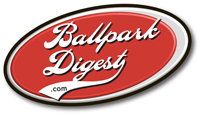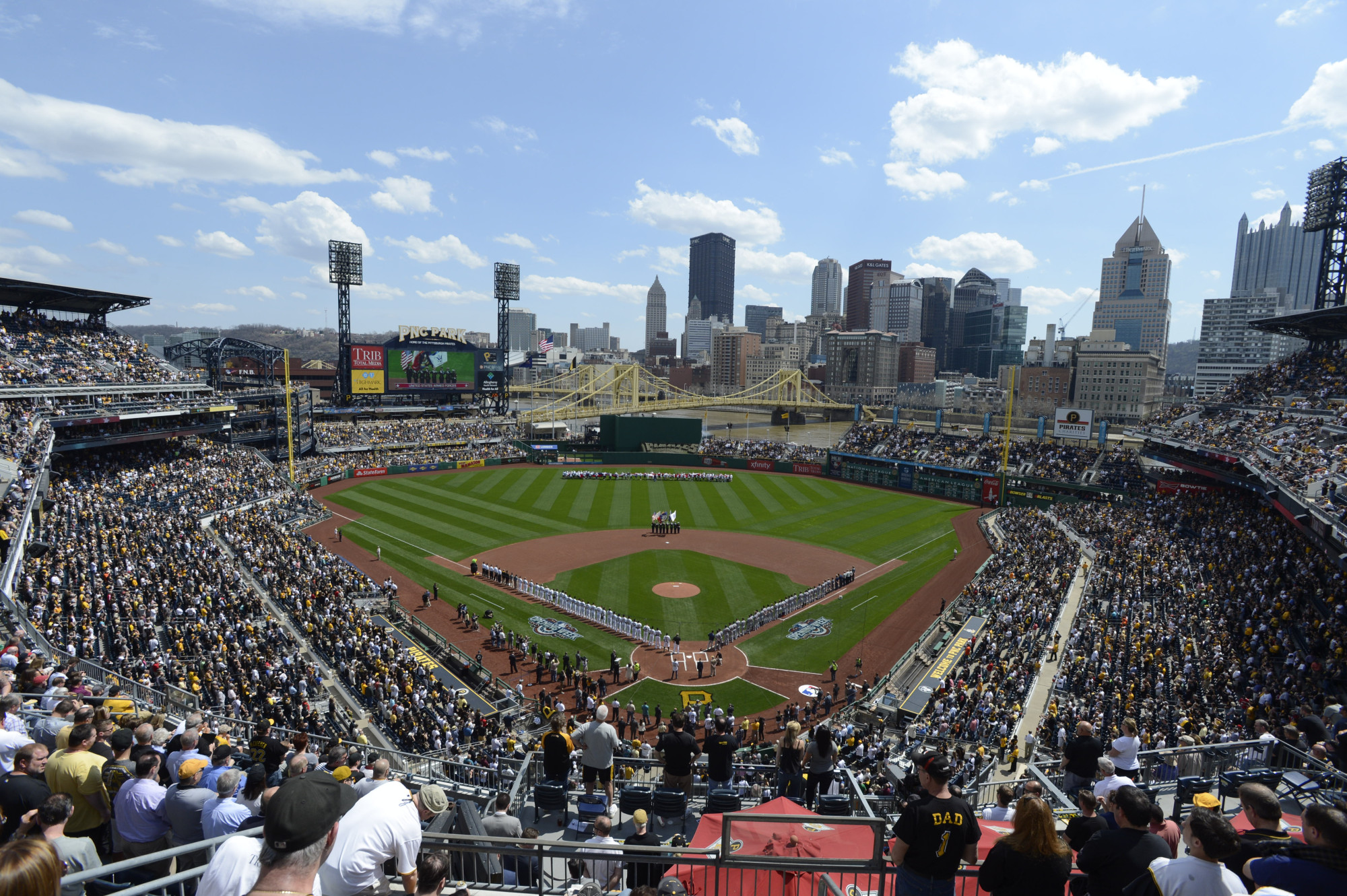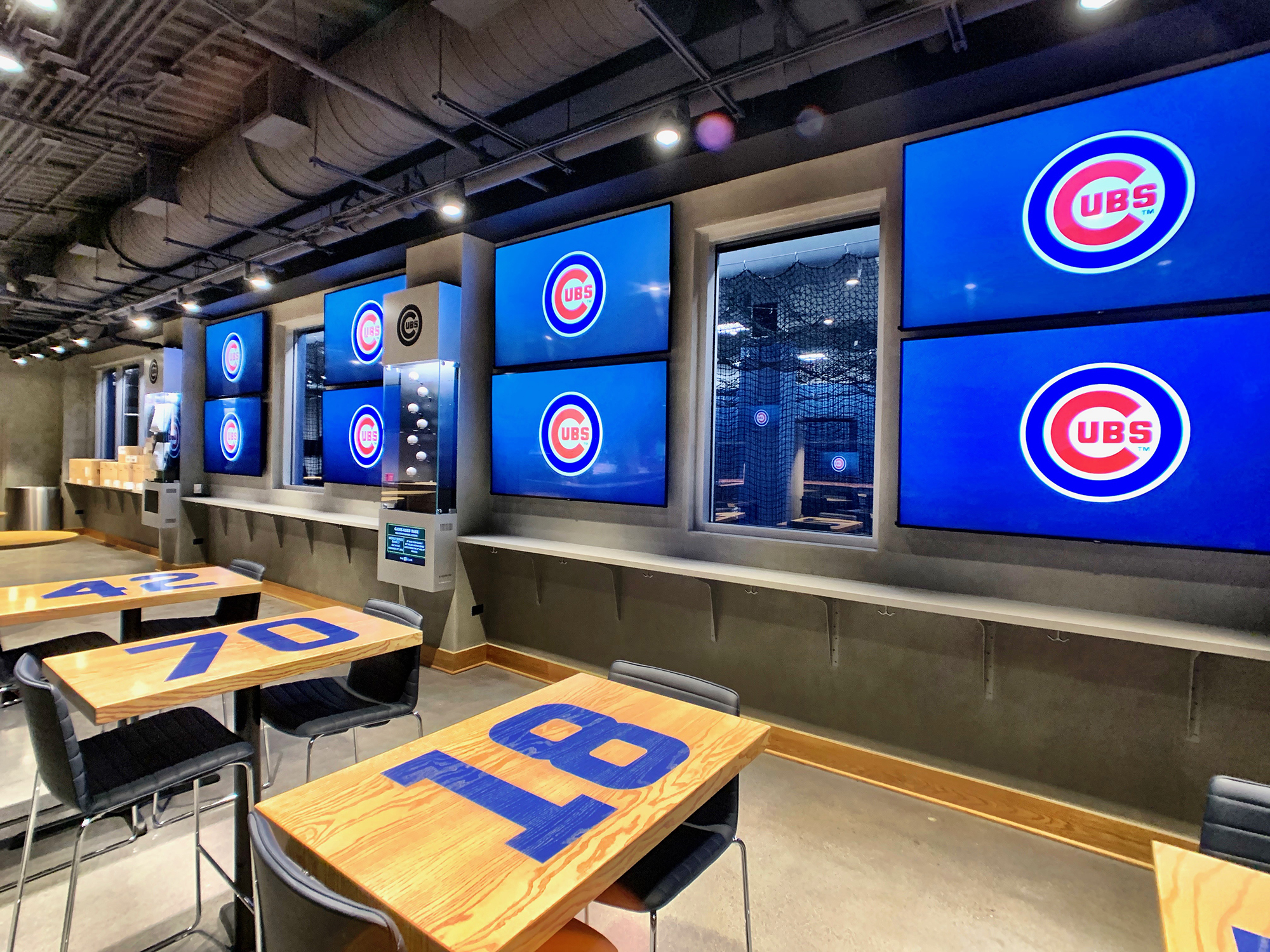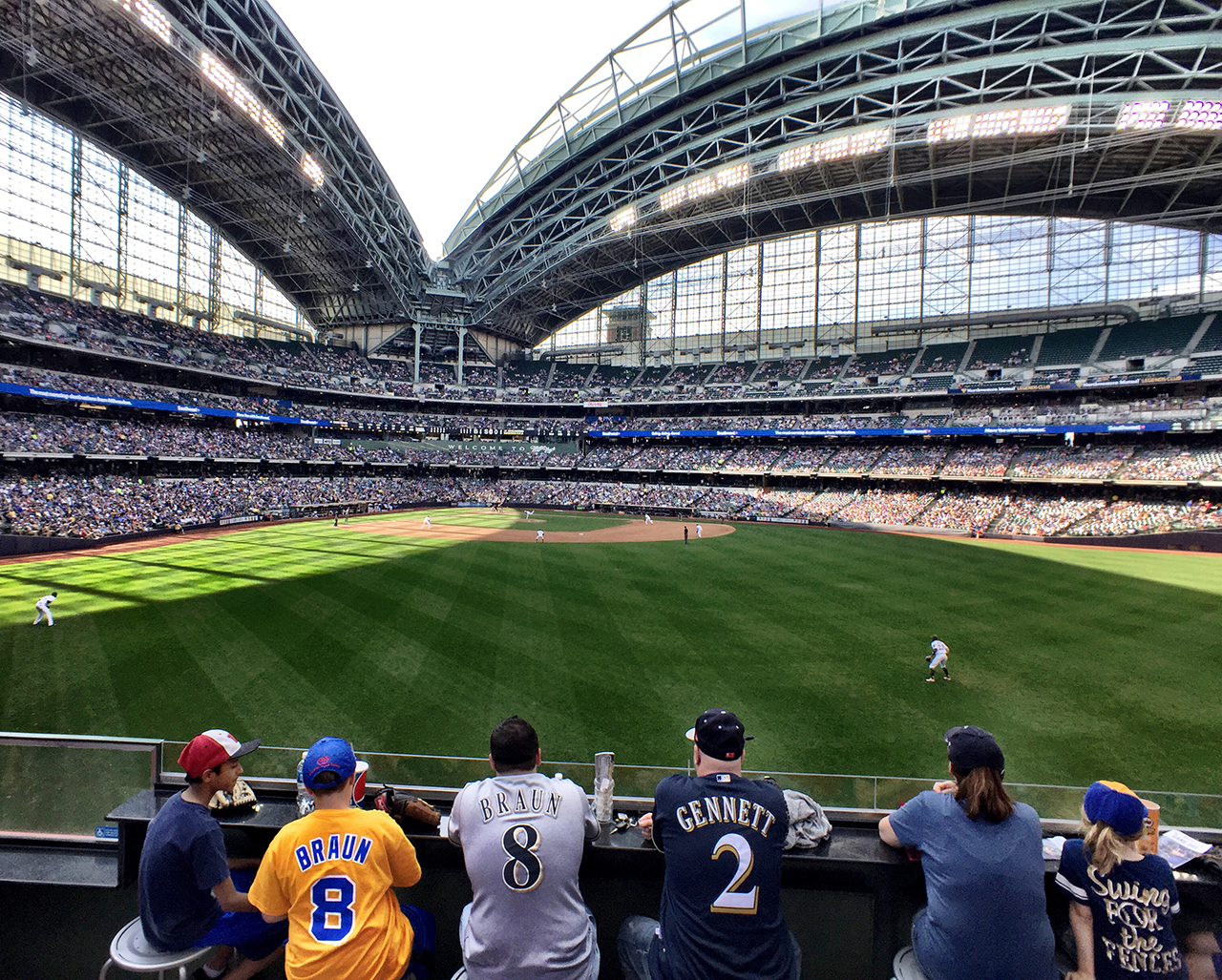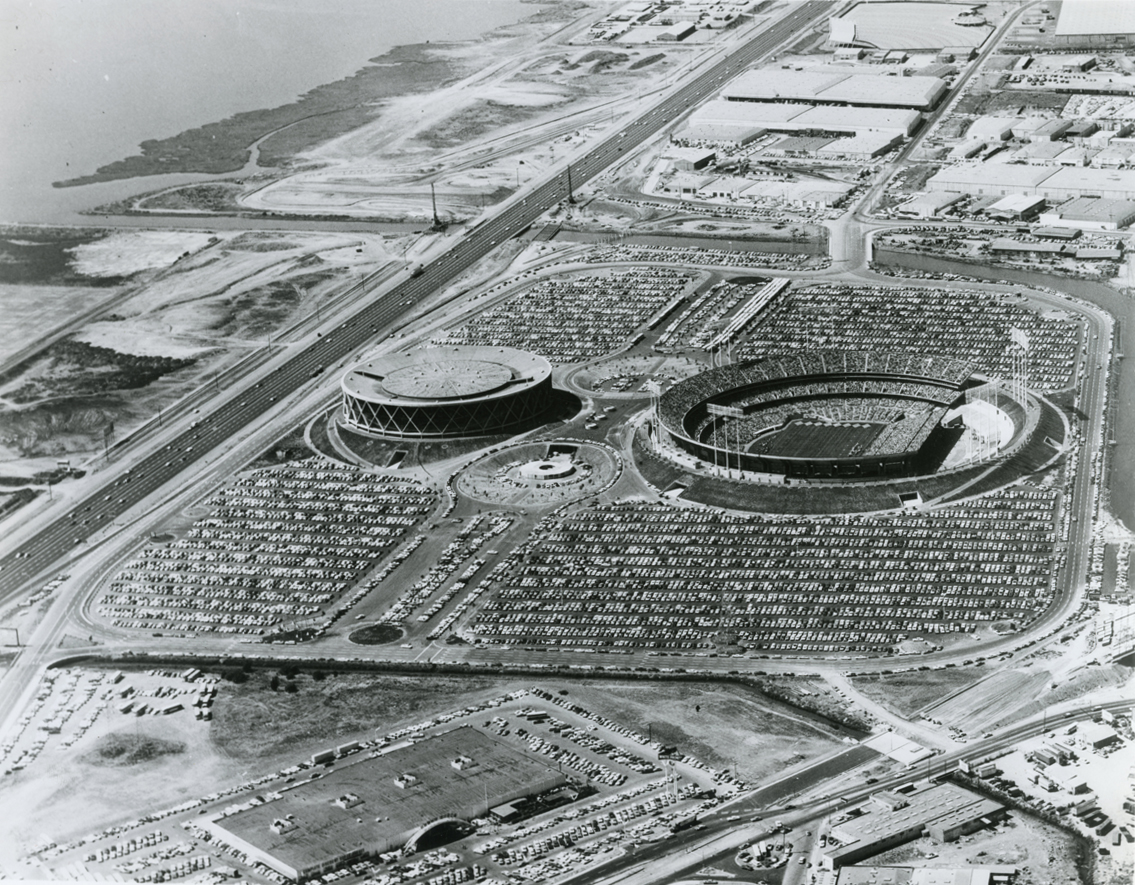What are the best MLB ballparks? We rank them from top to bottom in our annual Best of the Ballparks MLB rankings, updated for the 2020 season.
Everyone has a favorite ballpark, whether it be the site of a first MLB game, home to a memorable moment, or the local favorite where we’ve spent the most time over the years. In this list, we’re taking a step back from emotional choices and ranking the MLB ballparks from top to bottom. We don’t expect everyone to agree with our choices, and you have the chance to register your agreement or disagreement by participating in the Best of the Ballparks 2020 fan vote.
We’ve broken down this list into five subcategories. The top 10 MLB ballparks are in a league of their own, and one could argue that any of the 10 could be deemed the best in all of baseball: really, there’s not much sunlight between PNC Park and Dodger Stadium when you look at factors like fan amenities, architectural distinction, and history. The next six ballparks are all very good ballparks, but they don’t measure up to the best in MLB. (If your favorite is in this group, more power to you, and we hope you enjoy the ballpark experience.) The next eight ballparks are in need of TLC, even if they’ve seen some upgrades in recent years. And the bottom five ballparks are either slated for replacement or acknowledged by teams as needing plenty of TLC.
This isn’t the result of a formal grading system, but rather recommendations based on years of attending games, seeing how the ballparks function behind the scenes (we have seen our share of ballpark cisterns while on visits in the past), how these ballparks have made an impact in their communities, and noting how ballparks are regarded within the industry. One of the reasons we love working in baseball is that many industry folks, including many on the player side, are ballpark geeks, and we think this list reflects broad sentiment among those who know ballparks best. This is a most unusual year for professional baseball, to be sure, and our rating reflect it. We’ve shaken things up and purposely took the long view: less on annual concessions upgrades and more on community impact and aesthetics: When it comes to generating urban renewal, several of the ballparks here have a documented role in upgrading surrounding neighborhoods. Let’s get right to it.
Best of the Best
1 PNC Park A past winner in the fan vote for Best of the Ballparks, the home of the Pittsburgh Pirates is a beloved facility that combines the perfect site, lots of architectural distinction, and many memorable fan amenities upgraded annually. There are plenty of reminders of the rich history of the Bucs via statues and displays, and walking across the Roberto Clemente Bridge on a game day is a memorable experience for Pirates fans. Add to that the above-average concessions, virtually perfect sightlines and a commitment from the team to perform annual upgrades, and you have our pick for the best ballpark in baseball. (2019 rank: #1)
2 Wrigley Field The second-oldest ballpark in the majors is one of the newest ones, as a $550-million-plus modernization plan upgraded fan experiences and player facilities, while restoring the feel of the original classic. Opening as Weeghman Park in 1914 as the home of the Chi-Feds, Wrigley Field has been altered over the years—the grandstand was split apart and expanded in 1923, a second deck was added in 1926-1927, and the legendary bleachers were rebuilt in 2005-2006—but even with all the changes, you get the sense that the ballpark, for the most part, remains true to architect Zachary Taylor Davis’s original vision. Today there’s something for everyone at Wrigley Field: a private club for high rollers, grandstand seating close to the action, and outfield bleachers for those more interested in a social scene than a baseball game. (2019 rank: #2)
3 Truist Park Critics said putting a ballpark in the midst of a busy Cobb County suburban location wouldn’t work. But Truist Park and The Battery have been both a critical and financial success. The fan experience, which features an onsite microbrewery, an outstanding Monument Garden occupying prime ballpark concourse real estate, and enough seating options to please every fan, is one of the best in all of baseball. The Braves were also successful in aligning a new development, The Battery, with the ballpark, creating a new economic model for sports venues. We’re not just talking about an entertainment district next to a venue: we’re talking about an environment where people work, live and play. The success of this business plan—cited as a model by MLB officials when plotting future ballpark development—is why Truist Park’s ranking has improved over the years. (2019 rank: #7)
4 Target Field Walt Disney once said that Disneyland would never be completed, as it would grow and change as long as there is imagination left in the world. And while Target Field is hardly Disneyesque, the Minnesota Twins do show the inclination to make annual upgrades to the ballpark. Over the years we’ve seen imaginative upgrades like the major conversion of a private dining space for season-ticket holders to a public social space (a sports bar on steroids to enhance the ballpark experience), a “living” batter’s eye and a new outdoor space with pop-up vendors and kids’ activities. Add in plenty of Minnesota connections on the food and beverage front, great sightlines, plenty of discrete seating areas for all kinds of fans, and an abundance of spots just for standing around to watch a ballgame, and you have a pretty good blueprint for new and renovated ballparks of all kinds. Target Field was key to the continued renaissance of Minneapolis’s North Loop area. (2019 rank: #5)
5 Oracle Park Could there be any better location for baseball in San Francisco than a waterfront site used to great advantage by the ballpark architects? The views from the grandstand and outfield concourse of San Francisco and the Bay are tremendous and walking around the ballpark is a delight. The Giants’ rich history, as well as San Francisco’s PCL history, is memorialized in and outside of the ballpark. It’s also the most transit-friendly ballpark in the majors, accessible via car, train, bus, bike, boat and ridesharing. This is the ballpark that originally gave us garlic fries and it still offers a distinctive food program. The Giants performed some ballpark upgrades for this season; we can’t wait to see them. (2019 rank: #3)
6 Dodger Stadium There’s only one mid-century modern ballpark left in Major League Baseball, and it’s wholly appropriate that it be in Los Angeles. In the late 1950s and 1960s, California was repository of the new; while the East Coast was old and decaying, California—and especially Los Angeles, the center of the entertainment industry—was positioned as the new. And that especially applied to Dodger Stadium, the most modern facility in baseball when it opened in 1962. (That didn’t last long: the Astrodome shattered the notion of the new when opening in 1965.) We hope fans will be able to enjoy Janet Marie Smith’s 2020 Dodger Stadium renovations that restored the charm of the original while adding modern touches like upgraded concessions, group areas and social spaces. (2019 rank: #6)
7 Petco Park A very underrated ballpark, Petco Park succeeds both as a venue and as a facility that played a significant role in generating urban renewal in the rundown Gaslamp Quarter. A San Diego Padres game is a treat: the sightlines at Petco Park are tremendous, the architecture touches so significant (incorporating the Western Metal Building into the ballpark design—melding the new ballpark with the established neighborhood—was pure brilliance), the food and beverage offerings are top-notch, and the location, within walking distance of a slew of affordable hotels and parking garages, can’t be beat. And it’s perhaps the most kid-friendly ballpark in MLB: The 2.7-acre Park in the Park is an awesome grassy area where kids can blow off some steam and the parents can chill with a tasty local microbrew. (2019 rank: #8)
8 Citi Field The home of the New York Mets has aged remarkably well, and if anything gets better every year. To us, it’s remarkable that Citi Field manages to feel like a self-contained urban oasis despite being located in the midst of parking lots: there are very few bad seats, and the design pulls off the trick of being both intimate and spacious for those who love to wander the ballpark during a game. If anything, we’d love to see more reminders of Shea Stadium past the home-run apple and a named bridge on the concourse: Shea generates bad memories because it was a dump at the end, but when it opened Shea was state of the art. The references to Jackie Robinson in the main rotunda entry are nice, but this ballpark is not located in Brooklyn. Still, with the great sightlines and the robust food/beverage program, Citi Field excels. (2019 rank: #9)
9 Fenway Park The oldest ballpark in the majors, Fenway Park still retains a high amount of old-time charm. We all focus on the areas that have been updated in the past decade—the Green Monster seating, the right-field corner seating, the renovated center-field food area—but there’s lots to Fenway Park that’s authentically vintage, and it’s those areas we love. Yes, the concourses are cramped, the seats are ill-designed for the modern posterior, and parking is a nightmare. Having said that, a game at Fenway Park is an essential baseball experience and should be on every fan’s bucket list. (2019 rank: #4)
12 Citizens Bank Park The home of the Philadelphia Phillies shares one big trait with Citi Field: its design pulls off the trick of being both intimate and spacious for those who love to wander the ballpark during a game. The Phillies have aggressively moved to improve the ballpark experience in recent years, both with extensive concourse upgrades and the installation of the 24,500 square foot Pass and Stow, featuring an open-air beer garden, family-friendly sports pub, 44 TVs to follow the action, Foundry Pizza, and more. The Phillies also installed the ultimate selfie spot: a 19-foot-high Liberty Bell that once sat atop Veterans Stadium and have displayed it outside the newly renovated area. (2019 rank: #9)
Great Experiences (But Could Use a Little More Updating)
11 T-Mobile Park Before 2020, the former Safeco Field was starting to show its age a little—the concourses are a little narrow, and fun features like the Hall of Fame and history exhibits can get crowded quickly—but the team embarked on an ambition upgrade program that saw a serious expansion of social spaces and lounges, while overhauling and rebranding some existing spaces and concessions. Sad to say we won’t see these spiffy spaces in full use this year: T-Mobile Park was a pioneer when it came to social spaces and it was already a foodie heaven. (2019 rank: #18)
12 Yankee Stadium When the third Yankee Stadium opened in 2009, it was criticized for being cold and a little too reverent for down-to-earth New Yorkers. Since then, the Yankees have toned down the grandeur and implemented more crowd-pleasing measures. Give the Yankees credit: when they do something, they do something big. When they upgraded concessions to offer more high-end meats, they not only devoted prime concourse real estate to the venture, they added space for an on-site butcher, doing their work behind glass. When they added social spaces, they cleared out several sections in center field to make way for a massive group area, complete with plenty of USB charging stations, and added upper-level bars with four tops and drink rails. When Yankee Stadium III opened, fans were expected to stay in their seats and take in every minute of action; recent changes at the ballpark have relieved the weight of history and made Yankee Stadium a much more inviting place. (2019 rank: #10)
13 Kauffman Stadium Another classic ballpark that’s aged well, Kauffman Stadium opened in 1973 and received a serious set of upgrades in 2009. There’s no mistaking Kauffman Stadium for anything other than a Kansas City ballpark: local food items are sold at prominent spots in the concourse, a Hall of Fame in the left-field corner spotlights not only the Royals but important Negro Leagues history, and an expanded fountain area is showcased in the outfield. Why is this important? Kansas City is the City of Fountains, dating back to the 1800s when public fountains were erected for thirsty animals; later fountains were more decorative in nature. The original Kauffman Stadium fountain was privately funded, not part of the original ballpark budget. There has been talk about a new downtown ballpark in the team’s future: we wish they could just lift the existing ballpark and haul it downtown. (2019 rank: #11)
14 Oriole Park at Camden Yards The ballpark that launched the MLB retro movement, Oriole Park still exudes a lot of charm and provides a notable ballpark experience. There’s some real history here—a tavern once owned by George Ruth Sr. was located in what is now short left-center field—and there are nice representations of Baltimore baseball history, including a statue of Babe Ruth inexplicably holding a glove meant for a right-hander. The ballpark was refreshed in 2009-2012 with new seating, a club-level renovation, new center-field roof deck above the batter’s eye, and concessions upgrade, but the Orioles have been negotiating a new long-term lease that calls for most dramatic overhauls. (2019 rank: #14)
15 Coors Field It doesn’t seem like Coors Field is 25 years old. The role of the Colorado Rockies’ home in revitalizing the LoDo district of Denver has been well-documented, as a former expanse of abandoned and run-down warehouses and office spaces is now a thriving entertainment and business district. In this case, the retro architecture fits perfectly within the LoDo scene, and the Rockies have not stood still in implementing ballpark upgrades. A new entertainment district and office space is in the cards for next year. (2019 rank: #13)
16 Progressive Field The Indians revamped Progressive Field in recent years, opening the outfield concourse, overhauling suites, adding new restaurants and clubs, upgrading social spaces and modernizing parts of the ballpark untouched since Progressive Field opened in 1994. (Yes, it was that long ago.) The Indians debuted a revamped club space at the ballpark, along with a refreshed food and drink menu, and a slate of amenities that includes an upgraded kids zone and a Sensory Room. (2019 rank: #17)
17 Nationals Park Social spaces are the trendy ballpark feature these days, but most folks forget that Nationals Park featured a popular center-field gathering spot for millennials long before social spaces were even a thing. There’s a lot to like about Nationals Park in terms of the waterfront location and good sightlines, and it’s also worth noting the impact the ballpark made in the Buzzard Point/Navy Yard area: it’s now D.C.’s fastest growing neighborhood, and the ballpark is a big part of the growth in what’s now called the Ballpark District. (2019 rank: #19)
The Wild Cards (Need More Renovations)
18 Miller Park This ballpark saved baseball in Milwaukee. Previous renovations to the ballpark made the place scream Sconnie: from the tailgating in the vast expanse of parking to the cheese curds and brandy Old Fashioneds inside the ballpark, everything relates to the essential Wisconsin experience. Some minuses: it can be hard to make your way around the ballpark, as only one level—the concourse level—is a 360-degree walkway. And despite Miller Park having a retractable roof, it always feels like you’re attending an indoor game. This is the most intrusive roof in the majors, and the infrastructure supporting it interferes with the game experience. (2019 rank: 20)
19 Minute Maid Park The home of the Houston Astros sprawls. Infrastructure needed to support the massive retractable roof led to an extremely large ballpark footprint. This means some serious walks if you want to wander the ballpark. Most ballparks have an issue with narrow concourses; the opposite is true at Minute Maid Park. There is talk of ballpark renovations in the future; they would surely be welcome. (2019 rank: #21)
20 Comerica Park The retro is strong in Detroit, and equally as strong in Comerica Park, the home of the Detroit Tigers since 2000. The Tigers predate the American League and were a charter member of the circuit in 1901, so there’s plenty of Tigers history to mine. Statues of Al Kaline, Hal Newhouser, Hank Greenberg, Charlie Gehringer, Ty Cobb and Willie Horton dominate the left-field concourse, while the right-field Walk of Fame amply illustrates team history. Kids will love a Comerica Park visit: the pouncing tigers at the entry gates set the tone for a day, and rides on the Comerica Carousel (featuring 30 hand-painted tigers) and the Fly Ball Ferris Wheel will complete the day. The food offerings are varied, and the Beer Hall, with a 70-foot-long bar and plenty of micro- and macrobrews, is always worth a stop. Downtown Detroit is in the midst of a revival, and the ballpark has played a role in that revival. (2019 rank: #16)
21 Marlins Park Someone needs to take Derek Jeter aside and remind him that the road of excess leads to the palace of wisdom, per Annie Savoy and William Blake. Miami culture is loud and colorful, but there’s little loud and colorful at Marlins Park. The team removed Homer, the colorful home run sculpture, from its familiar spot in centerfield to make way for a new tiered social space. And while the Fish implemented some other trendy touches, including a redesigned lounge area and a standing room only social space in right field, it’s clearly not enough. (2019 rank: #24)
22 Busch Stadium Lots of value engineering went into the privately financed Busch Stadium, which opened in 2006. To their credit, the Cardinals have made recent improvements to the ballpark, including a new entertainment feature and social space in 2018. This is the sort of imaginative space we’d love to see throughout the ballpark. We’re also hoping to see Ballpark Village have more of an impact in the general downtown area. (2019 rank: #22)
23 Guaranteed Rate Field Truth is, we find Guaranteed Rate Field to be an underrated ballpark. It suffers from being the last MLB ballpark to open before Oriole Park changed all the design rules, and it also suffers from being a very vertical ballpark: it feels like a fortress as you approach it from street level. That vertical design also led to plenty of accurate criticism when it opened: the upper deck was simply too steep. After alterations, the upper deck is still a steep climb—though not as steep as it was—and the White Sox have put plenty of effort into upping the fan experience with multiple craft-beer spots and social spaces, including a Goose Island surrounded by flowing water. One reason why we rate it so low: it’s made a minimal impact in the surrounding area. (2019 rank: #23)
24 Great American Ball Park We love the nods to Cincinnati Reds history—the large murals, the statues outside the ballpark, an adjoining history museum, the Sun/Moon Deck—and we love the general layout of the ballpark, with plenty of easy access and riverfront views. We love the changes the Red made to Great American Ball Park last season, including the 12 loge boxes in right field. But it’s time to give Great American Ballpark a serious facelift: more social spaces, more access to riverfront views, and a better integration with downtown. When it comes to the fan experience, more is always good. (2019 rank: #15)
The Laggards (Need a Lot of Work)
25 Angel Stadium The home of the Los Angeles Angels is haunted by its past: when it opened, then-Anaheim Stadium was a modest ballpark with lovely views of the largely rural surroundings, the Big A in the outfield and modern concessions. The renovations since that 1966 opening did not necessarily improve the fan experience: closing the bowl off for the Rams really changed the nature of the ballpark, and the Disney renovation has not necessarily aged well. The Angels have proposed a dramatic overhaul of the Angel Stadium area with an aggressive mixed-use plan, but the team has punted on a decision on replacing or renovating Angel Stadium. (2019 rank: #27)
26 Chase Field There are good reasons why the Arizona Diamondbacks want either a new or renovated ballpark: Chase Field, despite TLC from the D-Backs, has not aged well and is need of deferred maintenance. Will the team stay in Phoenix or look for a new ballpark somewhere else in the Valley? That’s the big question. In the meantime, a game at Chase Field is a mixed bag: the food and beverage experience is great and the least expensive in baseball, but the seats in the back of field and upper-deck sections feel like they’re a mile away from the action. Part of this is related to the roof technology used when the ballpark opened in 1998, but here’s to hoping the place can be made more intimate if renovated. A new East Valley could be the core of some exciting redevelopment; upgrades to Chase Field would not. (2019 rank: #25)
27 Rogers Centre When opening in 1989, Rogers Centre was truly an engineering marvel, with a functional retractable roof and a design working for both baseball and CFL football. But despite some efforts to spiff the place up, Rogers Centre still has a 1989 feel, with plenty of exposed concrete and a synthetic-turf field. The team knows something needs to be done but seems paralyzed when presented with options. In the meantime, a game at Rogers Centre is a very sterile experience. We know the Blue Jays front office is eying some serious upgrades; we hope they succeed. (2019 rank: #28)\
Tear Them Down Already
28 Tropicana Field We will give the Rays ownership and management credit: they work awfully hard on the food and beverage front to improve the fan experience. The Rays were also installing social spaces before social spaces became a thing in professional sports. But in the end, the team is playing out of a 1990 barn where the quirks aren’t charming, and any fan-experience upgrades are limited. Yes, you’ll miss that inevitable late-afternoon Florida rainstorm because of the dome, but in the end you’re cut off from the sun and evening breezes that are part of the St. Petersburg experience. (2019 rank: #29)
29 Oakland Coliseum Yes, you’re outside, yes, you can take the BART to the ballpark, and yes, you can partake of some good food and drink while enjoying an Athletics game. But otherwise, the Oakland Coliseum experience means seats set back far from the action—even in the front row, thanks the expansive foul territory—and an infrastructure designed at all times to take you away from the action. Oakland Coliseum goes away no matter what, with the team ending up at a new next-door facility or a downtown Howard Terminal facility. Either plan would lead to redevelopment and investment. (2019 rank: #30)
Too Soon to Tell
Globe Life Field The new home of the Texas Rangers opens under the worst of circumstances: a 2020 season where fans may never experience the game-day experience. We included Globe Life Field in our Best of the Ballparks poll squarely in the middle of the rankings; this is how we approached other new-ballpark openings in 2020.
Field of Dreams, Dyersville Yeah, we should have included this one-game ballpark in our contest. Probably would have won the vote, despite not have a big impact on local economic activity: corn futures are down today.
This article first appeared in the weekly Ballpark Digest newsletter. Are you a subscriber? It’s free, and you’ll see features like this before they appear on the Web. Go here to subscribe to the Ballpark Digest newsletter.
